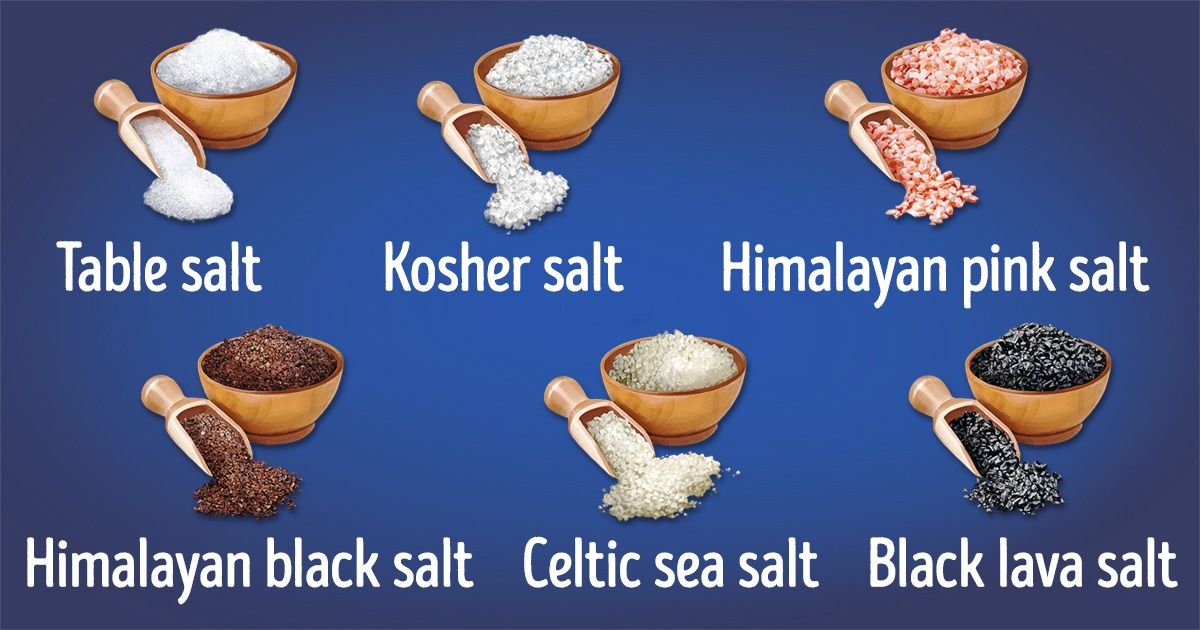
How to Use Salt in the Kitchen

While there are many types of salt, it’s important to remember that at the end of the day, edible salt, no matter how it’s marketed, is pretty much sodium chloride. In fact, all salt originates from the oceans and seas, even if it isn’t harvested directly from the water, so what matters the most is how it’s produced and not its origin. Different production methods mean resulting salts are distinct in size and structure, which, in turn, affects their purpose and sometimes their flavor too.
5-Minute Crafts made a salt cheat sheet for you to know how to use this key ingredient that’s actually a flavor potentiator like a pro.
A. “Workhorse” salts
In this section, we’ll cover “workhorse” salts that incidentally happen to be sea salts too. Much of what’s generically labeled as “sea salt” is industrially processed from evaporated seawater. All of these are chemically the same but their geometry does change, and that ultimately affects the purpose for which they’re used. However, note that sea salt can also be used as a finishing salt (see section B).
1. For cooking: coarse kosher salt
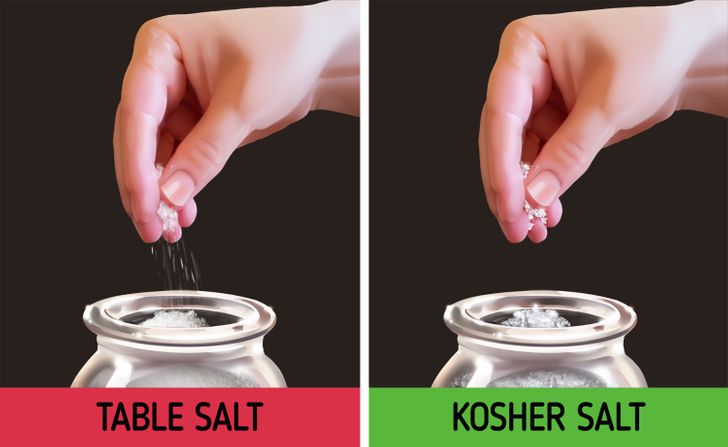
Chefs typically use kosher salt instead of table salt because it’s much easier to pick up between your fingers. This might seem like a weak argument, but having more control over your seasoning is essential when cooking. For one, kosher salt’s coarser grains are easy to feel and sprinkle, so you won’t be dropping them that easily. Secondly, it’s easier to distribute seasoning evenly with it. Finally, kosher salt also has no additives, so it has a more pure salt taste.
2. For baking: fine salt
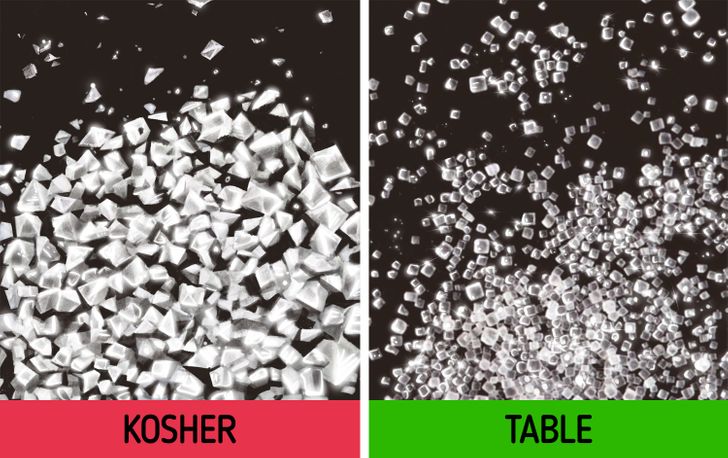
Also known as table salt, these small granules of fine sea salt can be distributed evenly over dry ingredients, such as flour. In general, table salt will also dissolve a little faster in liquids than kosher salt due to the smaller size of its crystals. These properties make it a good baking salt.
- Note: Some table salts have been iodized after production, which can give your baked goods a faint metallic flavor.
B. Finishing salts
Finishing salts are often specialty salts that are treated as an ingredient in their own right, like meat or expensive spices, such as saffron. They’re typically used to finish your dishes with more nuanced flavors before serving. They can be sea salt with a specific shape, or rock salt too, the latter coming mostly from ancient caves that were once part of or connected to the ocean.
1. Types of specialty salts
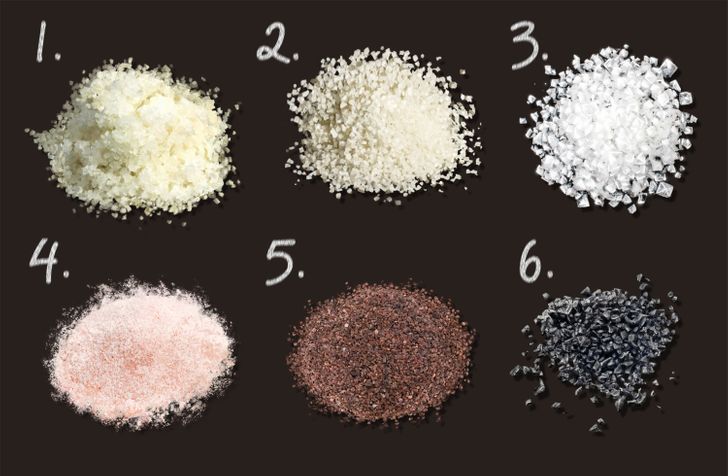
Depending on exactly how they’re formed and the trace minerals they contain, their shape and color can differ. And while the differences in color are mostly cosmetic, just like with workhorse salts (see section A), the shape can have an effect on their quality. Below are some of the most popular finishing salts.
- Fleur de sel: French for “flower of salt,” this is made up of irregular, delicate crystals that are mineral-rich. It’s gray and moist with large crystals that give it a pronounced crunch.
- Sel gris: French for “gray salt”, it’s sometimes known as Celtic sea salt. It’s unrefined and coarser than fleur de sel, and it has a satisfying crunch. This can also be a cooking salt if you’re willing to spend more money, but it’s a great finishing salt as well. It has an almost soft consistency and it’s still moist too.
- Flake salt: Its delicate flakes or pyramidal shapes break into thin, irregular fragments. It’s a punchier finishing salt than fleur de sel since the large flakes can provide a substantial crunch and vibrant bursts of saltiness.
- Himalayan salt: This is a pink salt with a subtly sweet flavor. All Himalayan salt is excavated from a single mine in Pakistan instead of evaporated from water like other salts on this list.
- Kala namak: Also known as “Himalayan black salt,” it’s mined in India. It contains sulfurous compounds, which makes it taste a little like overcooked boiled eggs. It varies in color from copper to deep caramel to black when it’s in large chunks. When ground though, it can have a lighter purple shade or a soft red tone.
- Black lava salt: Also known as Hawaiian salt or volcanic salt, this salt, unlike French sea salts, isn’t moist but totally dried and has a smoky taste. It can also be brick-red depending on how it was produced.
2. How to use them
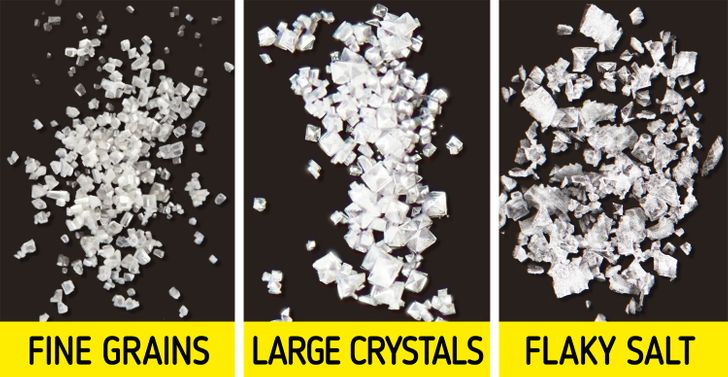
When viewed as an ingredient in its own right, salt can be treated like any spice. You can use it to complement other flavors, create contrasts, and also to bring about new textures in your food.
For example:
- Fine grains yield a jolt of saltiness but dissipate quickly.
- Large, dense crystals melt slower, so they prolong the salty flavor they give.
- Flaky salts are more like wild cards that can give bursts of salty flavor while they also can linger.
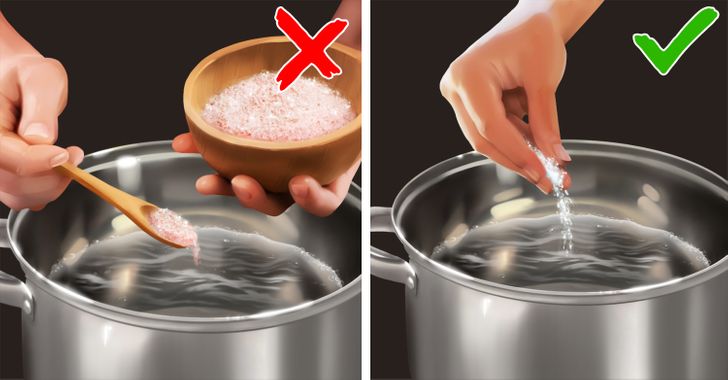
There are no rules for how to use salt. That being said, fancier salts are better used exclusively for finishing dishes (like for scattering on the tops of glazed loaves of bread before baking or sprinkling over sliced perfectly cooked steak just before serving). This is especially true given its cost. Typically, it isn’t meant to be used while cooking or for salting your pasta water, for instance.